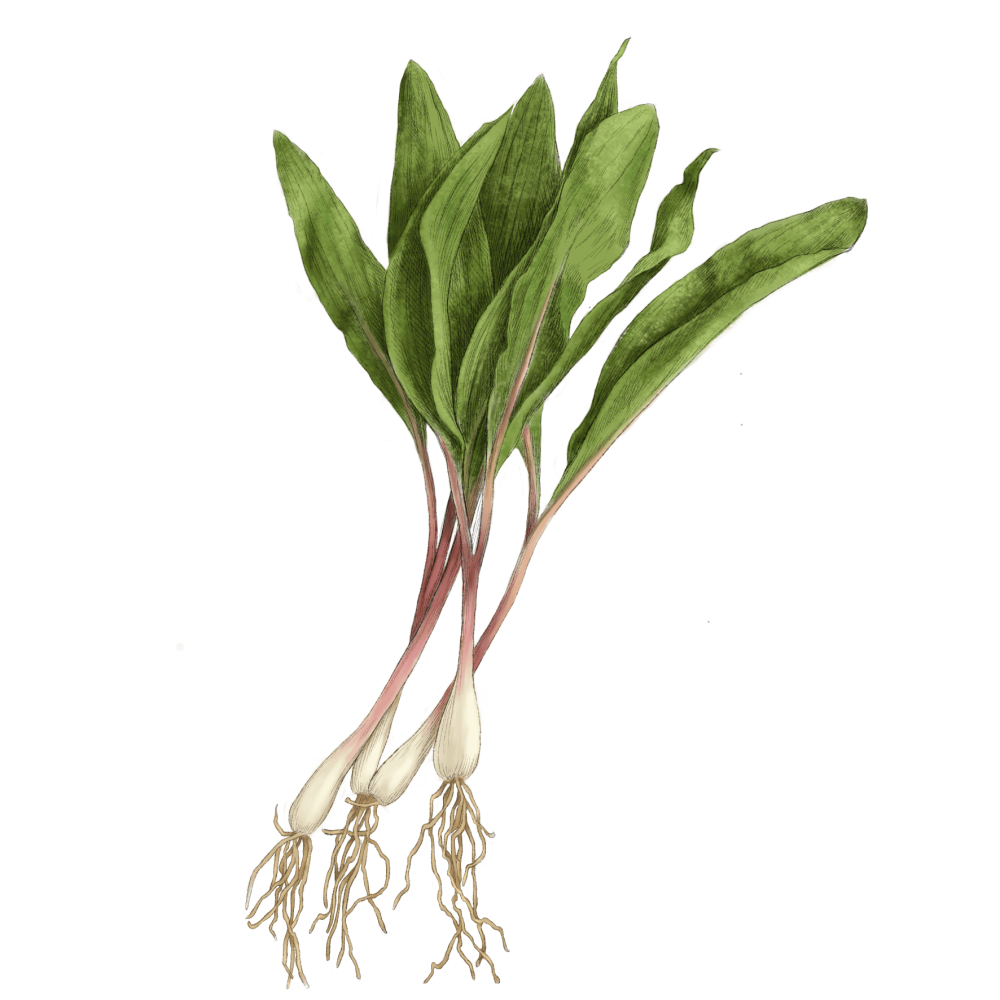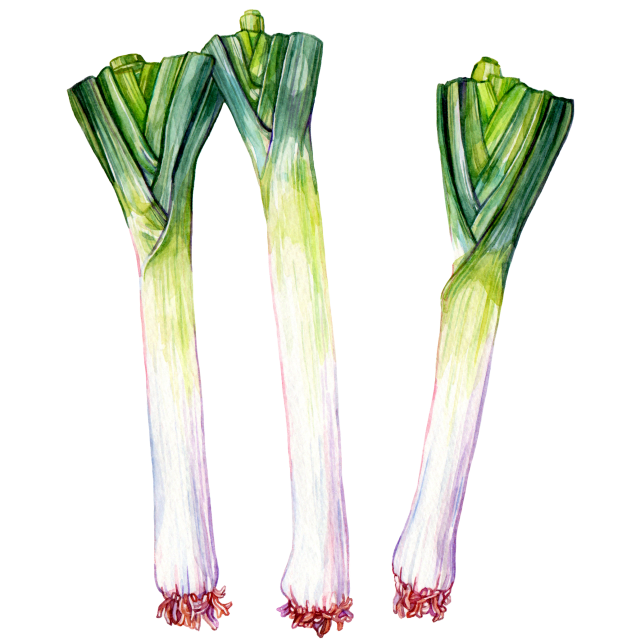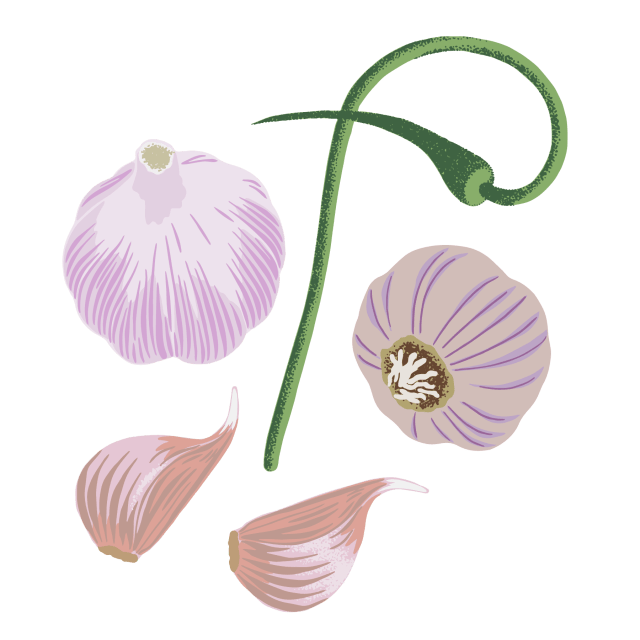Ramp

Latin Name: Allium tricoccum
Other Names: wild leek, wild garlic, ramson
Uses: vegetable
What are ramps?
Ramps are a wild onion with spear-shaped leaves and elongated bulbs that look a bit like scallions with skinny reddish necks. They’re famously pungent, with a sharp garlicky bite. In recent years ramps have become hugely popular, and demand has put pressure on these slow-growing plants. Best practices call for cutting just one of the two leaves on each plant and leaving the bulbs underground to ensure a sustainable harvest. The closely related ramson is technically another species (A. ursinus), but sometimes you’ll see ramps called ramsons too.
Why are ramps healthy?
Ramps are excellent sources of vitamin C and K1, and of the carotenoids our bodies turn into vitamin A. They’re high in antioxidants, particularly sulfur compounds (which contribute to their strong garlicky flavor) like allicin, thiosulfinates, and cepaenes — all of which are being studied for possible anti-cancer properties.
What do ramps taste like?
Like all alliums, ramps have a pungent onion aroma and flavor; ramp’s flavor is somewhat more pronounced than leek or garlic, but it tastes sort of like a cross between the two. The flavor is more concentrated in the purple-white bulb, whereas the leaves have a slightly grassier flavor.
How do I prepare ramps?
Ramps are often pickled/fermented or battered and fried (the latter more common in Appalachia), but you can also use them raw in salads or pesto, grill them like a calçot, or sauté them.
What do ramps pair well with?
Ramps’ alliaceous flavor makes them a natural fit for any dish that would be home to onions or garlic, but they’re best suited to pairing with other wild vernal ingredients like fiddlehead ferns, nettles, and morels; they’re also beautiful with garden-variety springtime foods like asparagus, pea shoots, new potatoes, and eggs. Like garlic and chives, they also play well with nuts (especially walnuts, almonds, and pine nuts), lemon, and hard cheeses.
Where do ramps grow?
Ramps grow wild along streams in the temperate deciduous forests of the eastern United States, especially Appalachia. They grow as far north as Quebec but are threatened there due to human activity (habitat encroachment and overharvesting). Ramson, ramps’ European analog, grow throughout the temperate regions of Britain to Centra Asia.
How to buy ramps:
If you aren’t lucky enough to have these springtime alliums growing in a wood near you, you might find ramps at your local farmer’s market or gourmet grocery store. Look for specimens with firm, white stems and bright green leaves that aren’t banged up or wilted, and be prepared for sticker shock —they’re expensive.
Fun ramp fact:
Ramps are so beloved in their native range of the Appalachian Mountains that numerous ramps festivals are held throughout the region every year between April and May. Known as the “Ramp Capital of the World” and home of the National Ramp Association, the aptly named Richwood, West Virginia, has held a ramp festival for more than 80 years.




